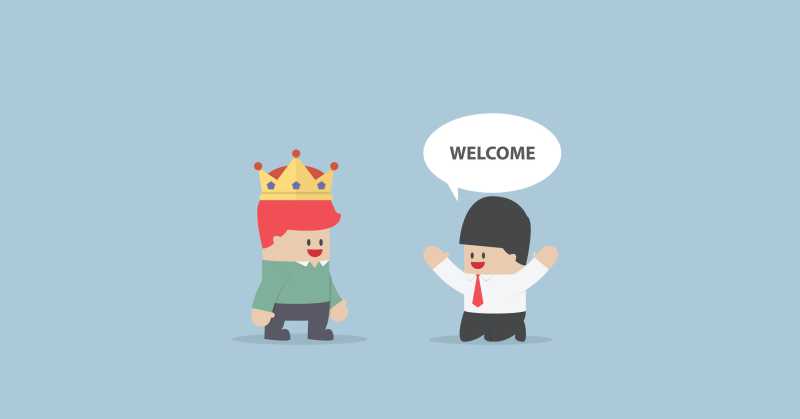
Customer service and support software increases revenues and profits by increasing the lifetime value of your customers.
Lifetime Customer Value is a concept the direct marketing industry came up with decades before the Internet. It’s how much, on average, money customers make you while they remain a customer of your products and services. The simplest way, yet far from the easiest, way to increase lifetime customer value is to keep them as customers. The longer you can count on the revenue from their sales and subscriptions, the more valuable they are.
That’s why you need effective customer support and help desk software.
Most Businesses Need to Increase the Lifetime Value of Their Customers
Your goal as a business is to keep increasing the value of your customers. Your marketing made them customers, and now your customer service must keep them buying.
The Higher the Lifetime Value of Your Customers, the Higher Your Business Profits
The higher your churn rate, the more new customers you must bring in just to stay even, and new customers cost the most.
The longer customers stay with you, the more valuable they are. A Harvard Business School study found that is even more true for e-commerce businesses. Improving the rate of customer retention increased company profits by 25% to 95%.
Therefore, after you’ve paid so much money to acquire new customers, isn’t it smart to keep them?
The cost of marketing is an investment. The Lifetime Value of that Customer is your return on that investment.
Your business’s profits, its continuing existence, depends on maximizing that ROI.
Churn is like buying shares of stock, and then burning them up.
What is the Easiest Way to Keep Your Existing Customers?
Keep them happy. In the company the Harvard Business School studied, management told employees to always act in the best interests of the customer, not to push for a short-term profit.
The Value of Engaging With Your Customers
In this article Gallup explains their findings about the value of engaged customers. On average, engaged customers represent 23% more business than indifferent customers who simply buy products based on a rational analysis of quality and pricing. In some industries, the difference is as high as 56%. Engaged customers feel loyal to a company. They continue to buy that company’s products even when a competitor is running a sale. They are brand ambassadors on social media sites.
Some customers, on the other hand, are actively disengaged. They are consumers who actively hate or avoid a company, and they represent 13% less revenue than the indifferent customers who buy whatever is cheapest at the moment.
But why do some consumers hate and avoid a company? Gallup doesn’t address this, but obviously it’s the flip side of what makes some customers happy.
What Makes Customer Happy is Great Customer Service
Once customers own or use your product or service, they tend to take you for granted . . . until something goes wrong.
Then they want the problem fixed, now.
They no longer take you for granted, but they’re upset because they’re missing out on the benefits of your product or service, and they want it back. They expect you to help them.
Solve their problem, and they’ll love you even more.
Treat them poorly, and they may leave and never come back.
Treat poorly enough, and they join the actively disengaged group of consumers who go out of their way to avoid doing business with you.
Accenture Calls it The Switching Economy
According to Accenture’s study on The Switching Economy, 51% of consumers in the United States switched companies due to poor customer service. 81% of those who switched said the company could have done something to prevent that action. The same survey revealed a huge amount of frustration among Americans over widespread problems with customer service. Clearly, U.S. consumers are extremely frustrated by ordinary “customer service” as usual.
Many customers who switched did so on the basis of price, but that was the second biggest reason. The biggest reason they changed providers was receiving poor customer service.
According to Accenture’s full report on the switching economy, this trend of customers taking their business from one company to another cost businesses around the world $5.9 trillion. In the U.S., it was $1.3 trillion.
InfoQuest Analyzed Customer Satisfaction Findings in 40 Countries
Their conclusion: a totally satisfied customer is 2.6 times as valuable as a somewhat satisfied customer.
The Lifetime Value of Your Customers, the Long Term Viability of Your Business, Depends on Your Customer Service
That’s right. After all the money you spent to acquire new customers, delays and poor organization, making it difficult or inconvenient to reach your representatives chops your LCV off at its knees and throws that investment to the garbage heap. So does a delay in getting back to them or solving their problems.
Despite that, many companies make the mistake of regarding customer service as a simple expense to minimize. They hire the cheapest outsourced call center they can find.
Customer Service is Not an Expense, It’s an Investment
After you paid so much money to acquire those customers, what sense does it make not to spend a little more money to keep them happy?
The happier you keep your customers, the more customers you keep and the more money your business makes.
Therefore, it only makes business sense to use the best customer support and help desk software available.
Vision Helpdesk allows you to combine all your conversations with customers whether conducted by web portal, email, Twitter, Facebook or chat. It has the software tools to help your Help Desk representatives solve problems for your customers. That keeps them happy customers, raising their lifetime value. Contact us now to start your free trial.
Vision Helpdesk: Simplify Your Life
signup for 30 days free trial.. no credit card. no obligation

Join the conversation